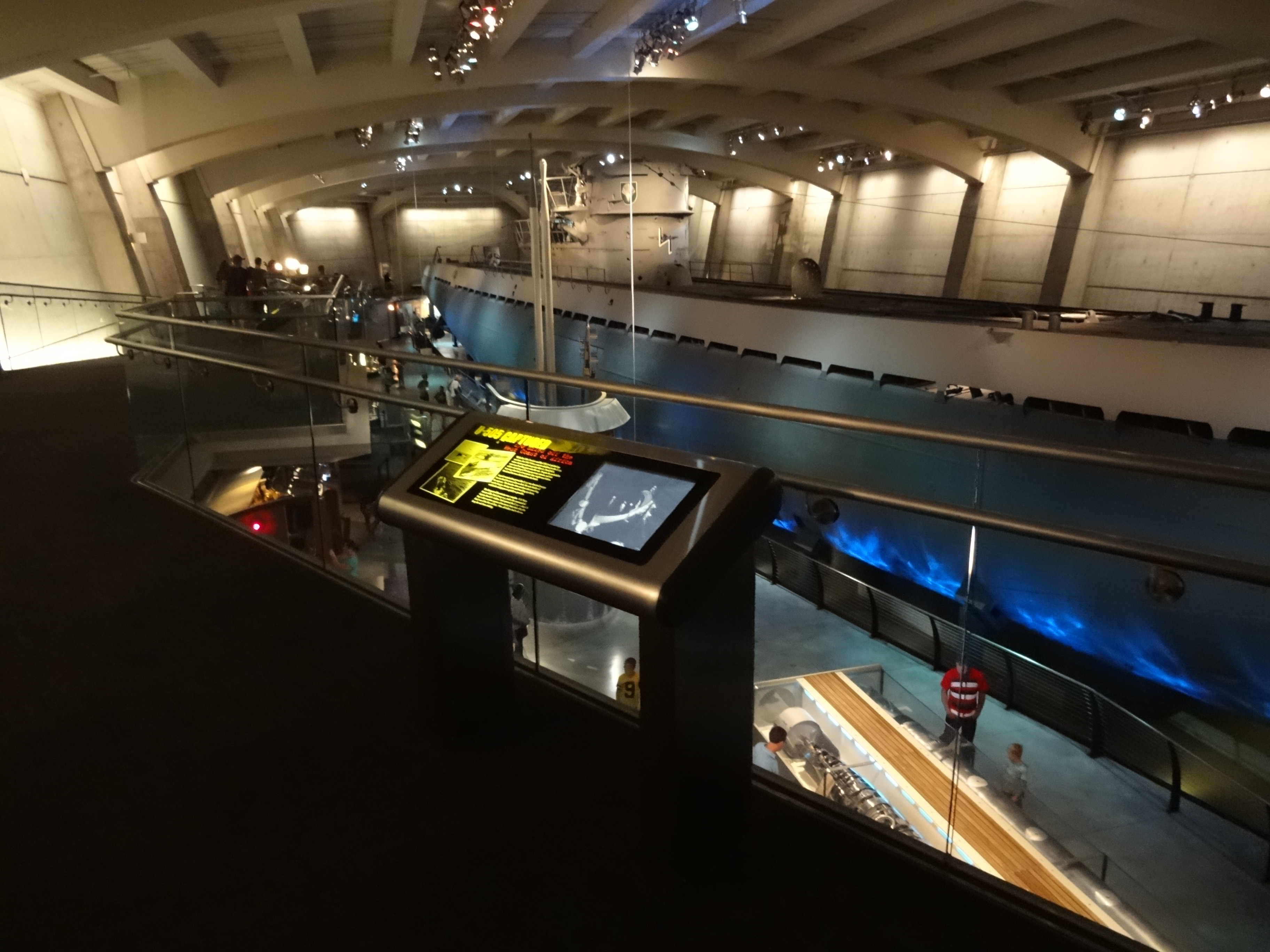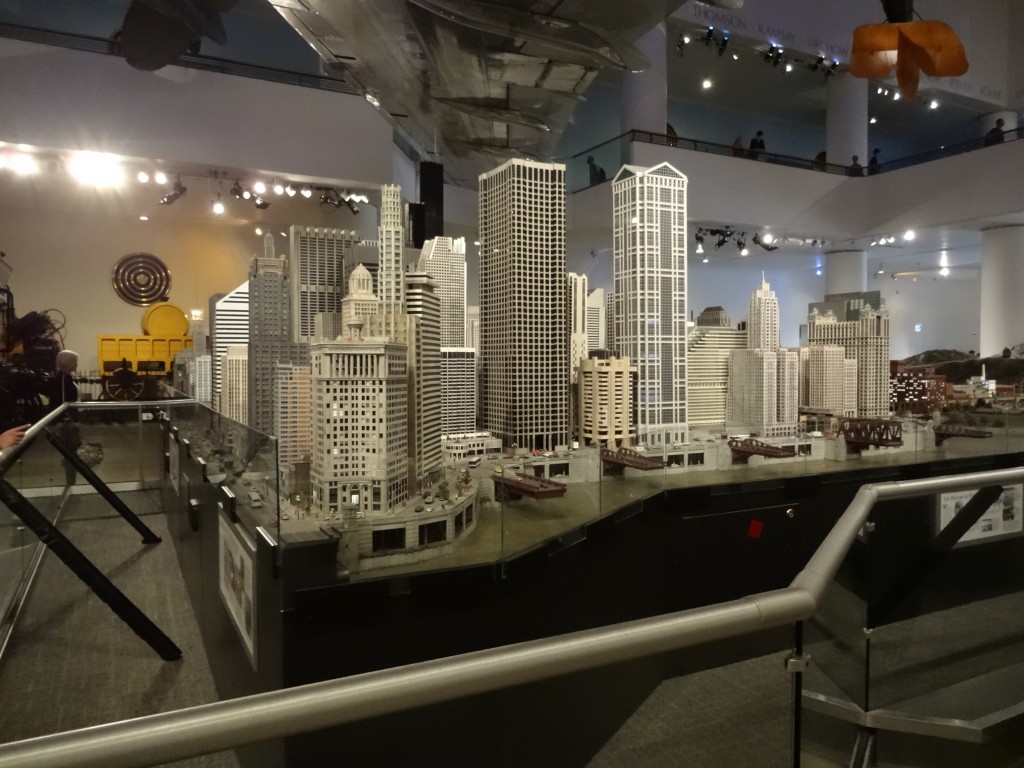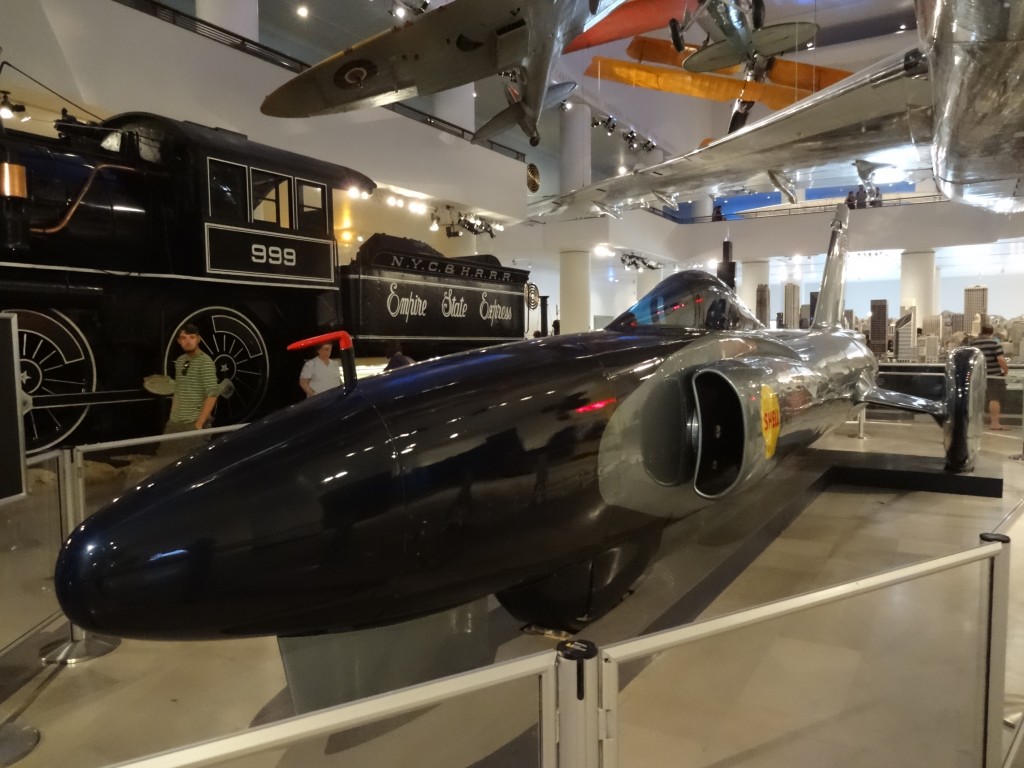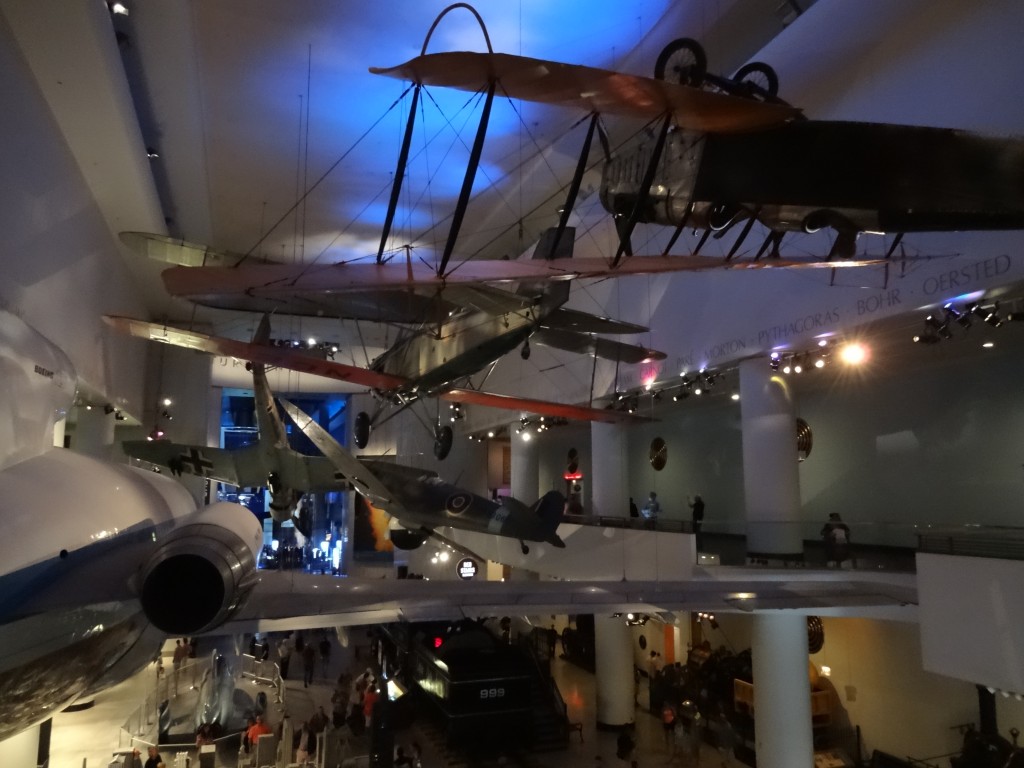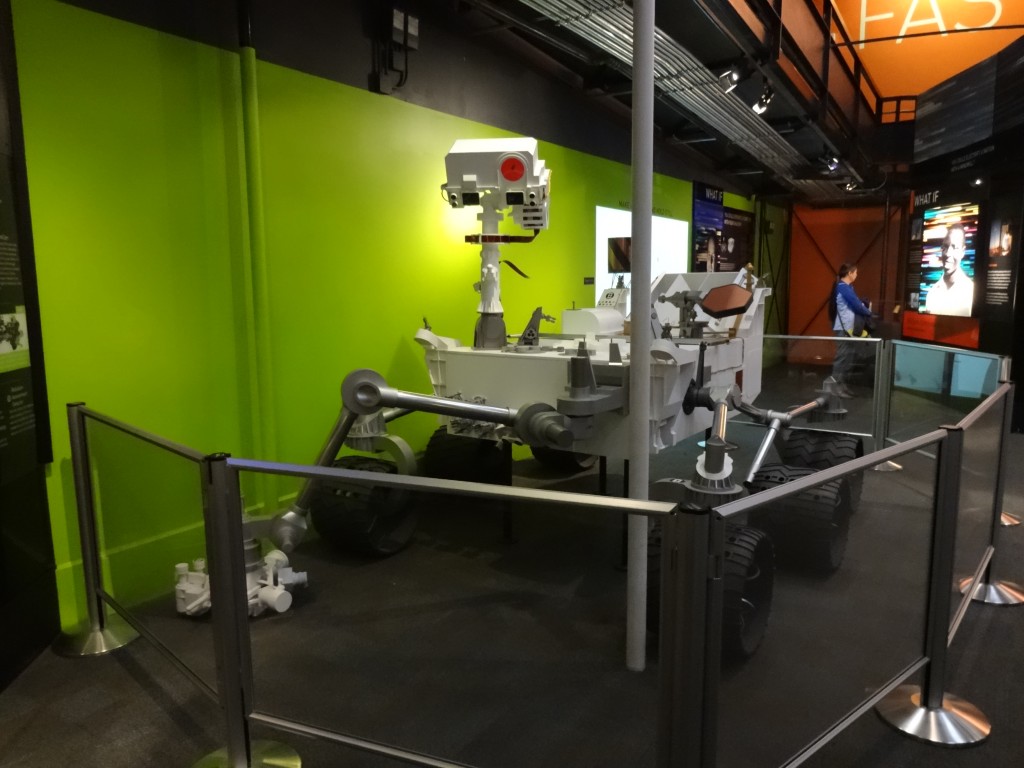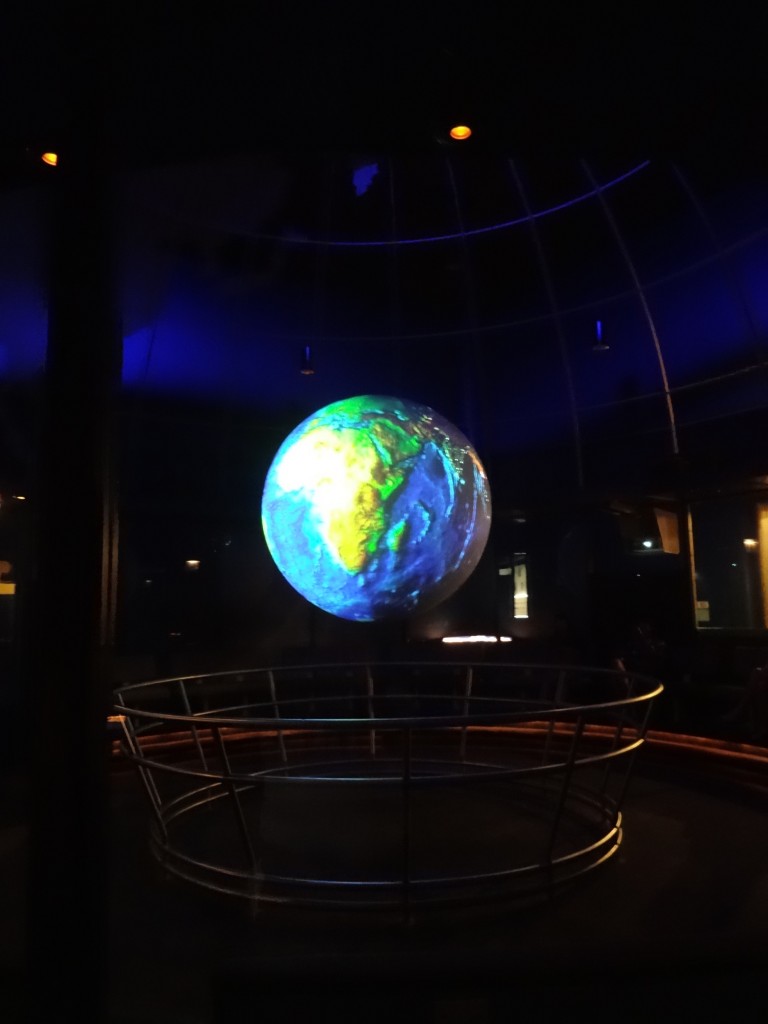August 29, 2014 – It is an inspiration to see the technological marvels that have gotten us to where we are today. And a great place to see this is Chicago’s Museum of Science and Industry. Containing more than 35,000 items on exhibit and covering 37,000+ square meters (400,000 square feet), the Museum has been around for more than 80 years.
My wife and I spent four plus hours there last week and could have taken in another full day. From bio-engineering and genomics, agriculture, transportation, energy and space, the museum overwhelms you with its wealth of exhibits and subject matter. You experience an American coal mine and descend into it. You can marvel at a scale model of Chicago with a working model train display that would set any hobbyist’s heart aflutter.
Tour a World War II U-boat, totally complete, and so large that they had to build the museum walls around it to incorporate it as an exhibit. Listen and watch the story of the U-505’s capture as presented with all the energy and excitement to make you feel like you are there.
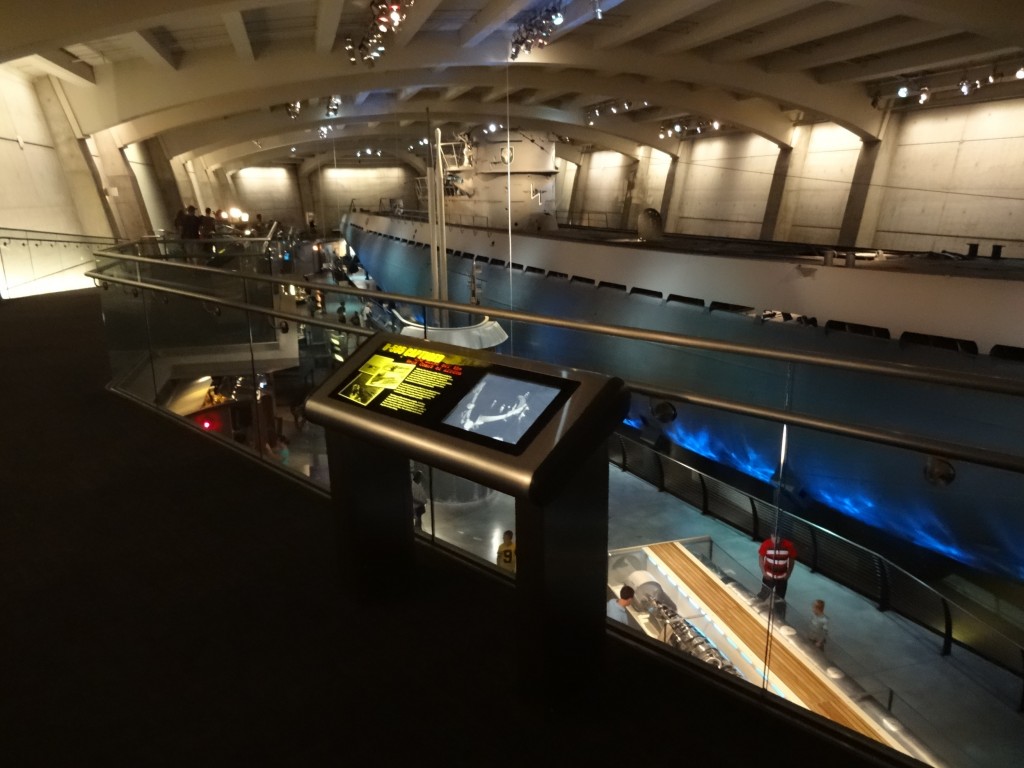
What surprised me was the scale of the exhibits themselves: entire trains encased within the walls, one with 420 plus meters (1,400 feet) of track; Craig Breedlove‘s jet-powered car on exhibit, the one that set the world land speed record. See the picture below. That’s it right next to the steam locomotive and coal car.
In that same hall an entire Boeing 737 is suspended overhead surrounded by vintage aircraft from the two world wars of the 20th century. You can see the wing jet engine to the left in the picture below. Note the Stuka and Spitfire behind the biplanes. Technologically displayed this way adds an extra dimension to our technological achievement.
Almost lost among the exhibits is a full-scale model of the Martian rover, Curiosity. I cannot believe how big it is, about the size of large dune buggy. And now having physically seen it I marvel at the engineering and technology that NASA and the Jet Propulsion Laboratory folks deployed to successfully land the robot on Mars, truly an astounding achievement.
So you would think a museum dedicated to science and industry would be looking far ahead into the future. There is a Fast Forward exhibit but it doesn’t have the same monumental scale as the exhibits of past achievement. You see snatches of the future in the genetics exhibit where you can read and learn about designer babies and epigenetics. The future gets covered in the agriculture section under genetically modified crops. And a spectacular globe of the world, suspended in a darkened amphitheater, provides a narrative of future trends on climate, population, communication, and transportation.
I shouldn’t be surprised that our future doesn’t have prominence here. After all a museum tends to be a narrative of the past supported by exhibits. Therefore it is seldom about the present or the future. And although the future may have little play in what we saw there is no doubt that this is one of the great museums to visit on the planet.
Take aways from our time spent in this museum and in Chicago in general.
Chicago is all about renewal and inventiveness. This is a city that burned to the ground in October of 1871 and a little more than two decades later hosted a world’s fair. It is the place where the skyscraper was invented, where Fermi conducted the first controlled nuclear chain reaction. It is a premier educational hub featuring more than 30 universities and 18 graduate schools. It is home to magnificent architecture, an effective transportation system (even though some of it over a century old and still operating). It has an inclusive waterfront, numerous parks and many recreational facilities. It’s diverse, urbane and dynamic and yes, it has problems with economic disparity and gun violence. But overall it is a great urban success story.
You know sometimes you need a trip away from home to renew your faith in the spirit and ingenuity of humanity. For my wife and I Chicago certainly has done that. In the picture below that’s her reflected in Cloud Gate with me in blue stripes and a red cap in the background.
Cloud Gate is a mirror-like bean-shaped immense sculpture that draws thousands each day to Millennium Park to interact with its curving surfaces. Through it you can see the Chicago skyline reflected in new and exotic ways. It is a reflection of the city in which it resides. A place of ingenuity and inventiveness, and an urban environment that demonstrates just how creative we humans have been and can be as we tackle the biggest challenges of the 21st century.
